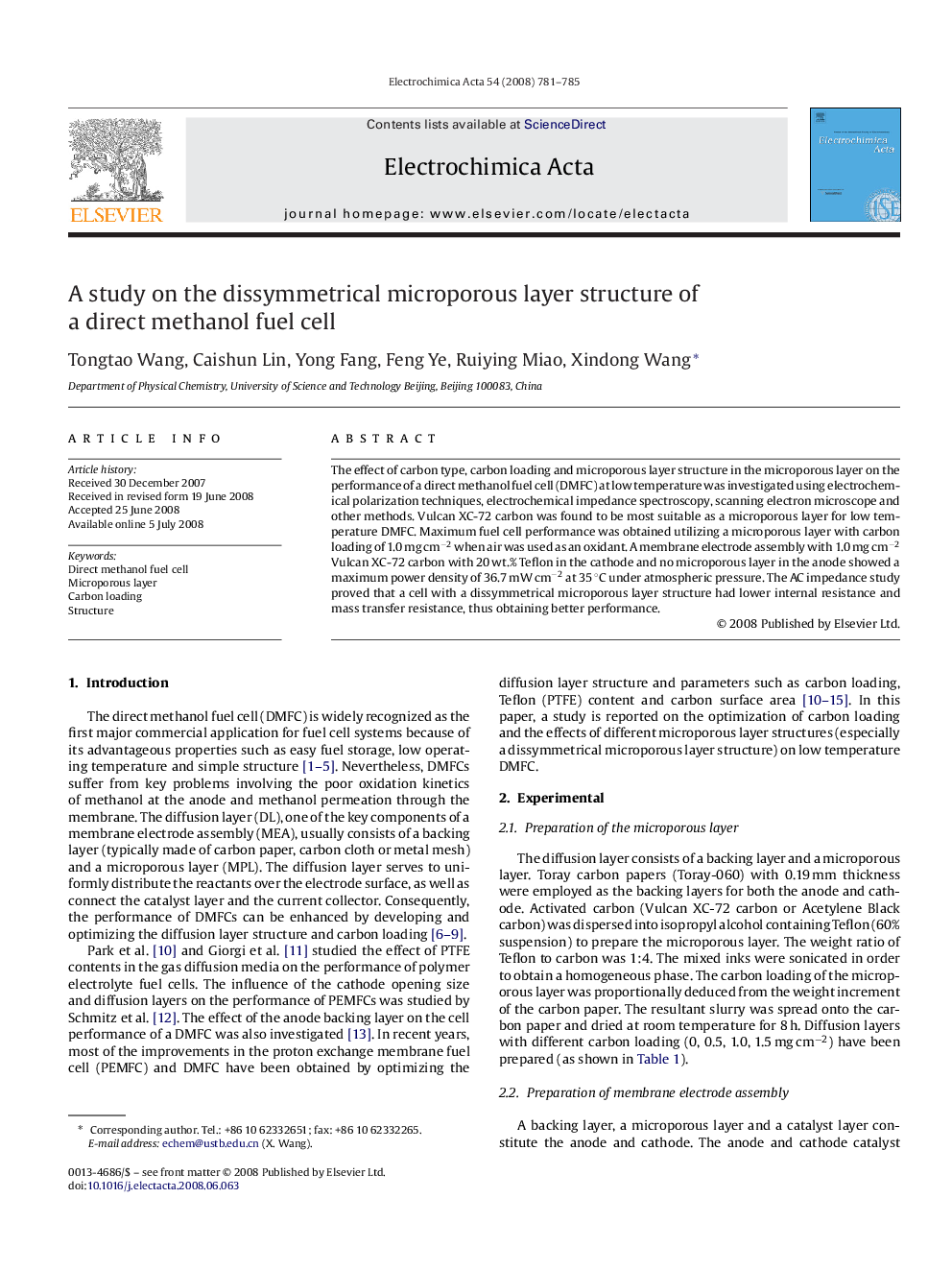| Article ID | Journal | Published Year | Pages | File Type |
|---|---|---|---|---|
| 194213 | Electrochimica Acta | 2008 | 5 Pages |
The effect of carbon type, carbon loading and microporous layer structure in the microporous layer on the performance of a direct methanol fuel cell (DMFC) at low temperature was investigated using electrochemical polarization techniques, electrochemical impedance spectroscopy, scanning electron microscope and other methods. Vulcan XC-72 carbon was found to be most suitable as a microporous layer for low temperature DMFC. Maximum fuel cell performance was obtained utilizing a microporous layer with carbon loading of 1.0 mg cm−2 when air was used as an oxidant. A membrane electrode assembly with 1.0 mg cm−2 Vulcan XC-72 carbon with 20 wt.% Teflon in the cathode and no microporous layer in the anode showed a maximum power density of 36.7 mW cm−2 at 35 °C under atmospheric pressure. The AC impedance study proved that a cell with a dissymmetrical microporous layer structure had lower internal resistance and mass transfer resistance, thus obtaining better performance.
